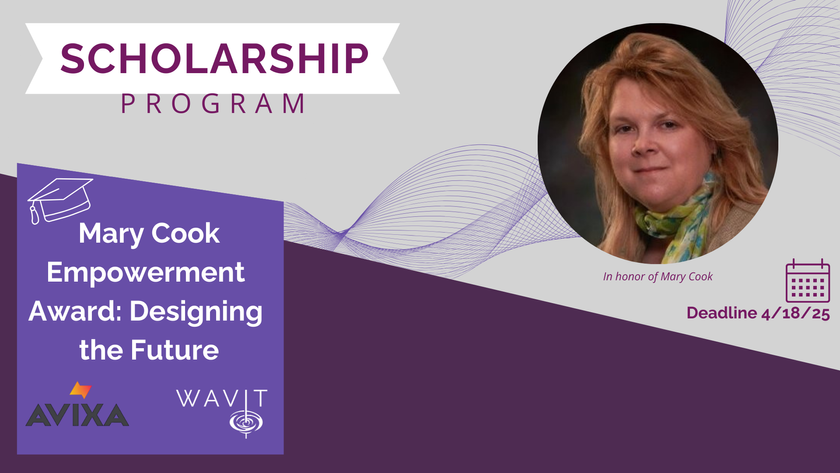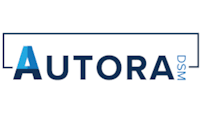Education never stops; it’s a process. So is the AV integration relationship to the important K-12 and higher education markets.
At Hendrix College in Conway, AR, The Sextant Group provided concept development, technology systems design, acoustical design, and construction administration for a new 78,000-square-foot facility, which featured an educational technology center for group-based learning and student presentation practice. A necessary component for success in this vertical is an understanding of the state of the market and how education technology is funded, whether through E-Rate, endowments, or other sources.
The Upper Midwest region saw some referendums passed in the past year for both state and community funded education projects, noted Todd Johnson, director of academic solutions group, Alpha Video and Audio. “There seems to be more promise right now in K-12. The market hasn’t been too bad, but we did see the building boom diminish from 2005 through 2012.”
2014 will be the fourth consecutive year state revenues have increased, said Eddie Franklin, vice president of sales for the public sector and vertical markets at SYNNEX Corporation. “State deficits also are at pre-recession lows. This year, general fund expenditures are expected to increase by 4.1 percent.”
E-Rate is still one of the most relevant federal subsidies for education at approximately $1.86B and up about 1.5 percent year over year, he added. “The 2013 cap for E-Rate was just over $2.3B and is now indexed to inflation. Common Core is requiring increased bandwidth across the board, and E-Rate is helping to subsidize. E-Rate is an off budget item; it does not fall under the budget debates and will continue regardless of any future federal budget issues.”
The ConnectED Program, tasking the education system to connect 99 percent of America’s students to the internet over the next five years via high-speed broadband and high-speed wireless, was announced in mid-2013. “Along with this announcement, the President called for the use of existing programs to accomplish his goals and named E-Rate as one of the main conduits of funding,” Franklin noted. “The FCC has complied by gathering input from constituents and is in the process of analyzing the input to formulate a plan to accomplish this.”
Private or Public?
When it comes to budgets, the figures are pretty evenly divided, said Mark Valenti, president and CEO of The Sextant Group. Sextant focuses on the higher education sector, where “project budget is really related more to project size, because both types of schools are buying in the same construction market. Obviously, some schools are willing to pursue a higher level of fit and finish than others, so there may be a bias toward private schools. But it’s a buyer’s market and owners are pretty demanding right now. Regarding number of starts, it seems our business is pretty even across both market segments. In retrofits, we’re seeing a lot of interest in re-thinking classroom space to accommodate new delivery models such as active learning.”
In K-12, private schools generally have more per pupil to spend for IT but the main differentiator is the percentage of students who have access to high-speed internet in the home and parent or guardian ability to provide additional IT devices and access to content, Franklin observed. “Public school budgets are always tight and must provide a consistent learning experience for all students. They cannot rely on outside influences to provide supplemental support.
The push toward Common Core and more digital content mandates that both private and public schools upgrade IT, and project starts related to IT are up significantly in K-12. “You might see more retrofits or passing devices down to lower grades in public schools versus a full fleet refresh in private schools, but overall, all educational entities are looking to spend more per pupil on content and enrichment versus the IT platform,” he added.
Atlas Sound’s IP paging solutions offer a VoIP option for schools. Originally introduced in the early 2000s, the products took many years to catch on, but are now Atlas’ top line. What’s New?

School construction is inevitable, Franklin asserted. “Facilities age, development brings a need for more schools, and demographics change to present the need for consolidation. This has more to do with the financial health of individual, municipal, or state governments than anything else. However, when new construction occurs, IT upgrades are generally part of the plan.”
What Johnson has heard across his region from manufacturers and clients is that 2012/2013 was low on new building construction but that now, general technology funding is coming for 2014/15/16 with the occasional new school facility. “The new referendums are for maintaining technology, and those schools built in 2005/2006 are now in need of replacement AV technology.”
A portion of the AV focus on any new construction and on AV updates will be on life safety in addition to curriculum impact, with architects taking direction on tech divisions 26 (electrical), 27 (low voltage and AV ), and 28 (surveillance). “The NFPA 72 (National Fire Protection Association) code means that there has to be a visual component to fire and protection systems in the case of fire, tornadoes, and lock downs,” he said. “Instead of an auditory horn or page, there has to be a visual, not a strobe light, but more like a digital sign with exit strategies, and classrooms projectors that automatically switch over to emergency mode, all driven by NFPA 72.”
Alpha is at the forefront of the NFPA 72 Code with its CastNET digital signage solution, Johnson said. “CastNET was designed several years ago with a live event module to send important and immediate signage to any screen, anywhere. We often have snow events here and with this technology you can manually go into the system and send a call through paging or signage to cancel school, for example.
An important AV update often centers on video surveillance for life safety. “In lockdowns, the most important request I hear is to get communication into classrooms that are locked down in a drill or an event, by video message or paging. Once we engage CastNET EVN (Emergency Visual Notification) we have outside access so a police officer outside the building can send a video update into each classroom. That goes above and beyond the code.”
The ultimate goal for the AV integrator, offered Manny Kitagawa, western regional sales manager for Atlas Sound, is to provide a better means of communication at a district wide level. “In order to achieve this, the integrator must understand the school’s logistical protocols. For example, what are the procedures for lockdowns? Once the integrator understands this they can provide a district-wide solution to ensure that every site will execute the procedures flawlessly.”
Karen Mitchell is a freelance writer living in Boulder, CO.
Through the Back Door
When Atlas Sound introduced its IP speakers in the early 2000s, the manufacturer followed a non-traditional audio path. Atlas Sound’s Manny Kitagawa also took the path less traveled in selling the product, proving that the education market is changing and that integrators need to be aware of what can be funded for technology.
“I thought I had a product that no one else had, a VoIP solution,” he said. “I approached all the traditional AV integrators with it and found that they were gun shy; there was a lot of fear in regards to this technology on the network. I can’t count the number of varieties of ‘No thank you’ I heard.”
Kitagawa met with AV tech directors at schools with the same result. “Again and again they told me there was no money for this. But at each school I noticed that they had a VoIP handset. How could they have money for that and not anything else?”
A breakthrough came at an unlikely spot, a gas station. “I was putting gas in my car when a school maintenance truck pulled in and I went over and talked to the driver. He was familiar with Atlas, and wanted me to meet with the maintenance operations department for the school district. When I sat down with those guys it all made sense to them and they brought it to their bosses. It became our top line.”
—K.M.
The Now and Zen of it All
How has the state of the education market evolved over the last several years?
The market will probably never again be what it was five years ago in terms of new buildings to accommodate growth or new buildings to replace aging facilities, The Sextant Group’s Mark Valenti predicted, but. “it is certainly stronger now than at this time last year and I’m very optimistic about 2015.”
Higher education is finally finding the influence of information technology to be quite disruptive. “Traditional financial models aren’t holding up in this era of online delivery, blended learning, and the influx of for-profit providers,” he explained. “So it will be a turbulent next few years, maybe even a decade, until the market re-stabilizes.”
In the K-12 arena, there are signs of improvement as combined state budget deficits that exceeded $190B in 2010 have diminished to less than $50B, noted SYNNEX’s Eddie Franklin: “The K-12 technology [spending] in 2013 was expected to be approximately $9.7B, up two-percent from 2012. This upswing will continue, in part due to Common Core requirements.”
The year ahead will be strong for K-12, he predicted. “Chrome will continue to gain ground, seeing the largest percentage of growth in terms of new seats. Other elements of IT, from client devices to infrastructure, should see strong increases. With new technology, such as digital textbooks and content, funds budgeted for paper materials will be migrating into increased technology [spending] over the next three to five years.”
Notably, the President requested $71B in competitive grants for education for 2014, representing a more than 4-percent increase over 2013. “Included in his request,” Franklin explained, “is $750M for preschool development grants to develop or expand high-quality preschool programs, $215M for investing in innovation to identify and validate new ideas and methods in teaching, $659M for school turnaround grants to support efforts to turn around low-performing schools, and $150M for STEM (Science Technology Engineering Math) innovation networks to promote consortia of schools and community partners to provide rich STEM learning opportunities.”
In addition, Race to The Top should continue with investments in deeper reforms in key areas where states and schools face implementation changes and critical formula programs that support reform efforts. Key areas will include STEM education, teacher professional development, school safety, school redesign, and career readiness.
“We’re looking forward to a challenging and rewarding education market for 2014,” Franklin concluded. “While there are some symptoms lingering from the great recession, the big picture indicates a positive business environment for technology providers.”













